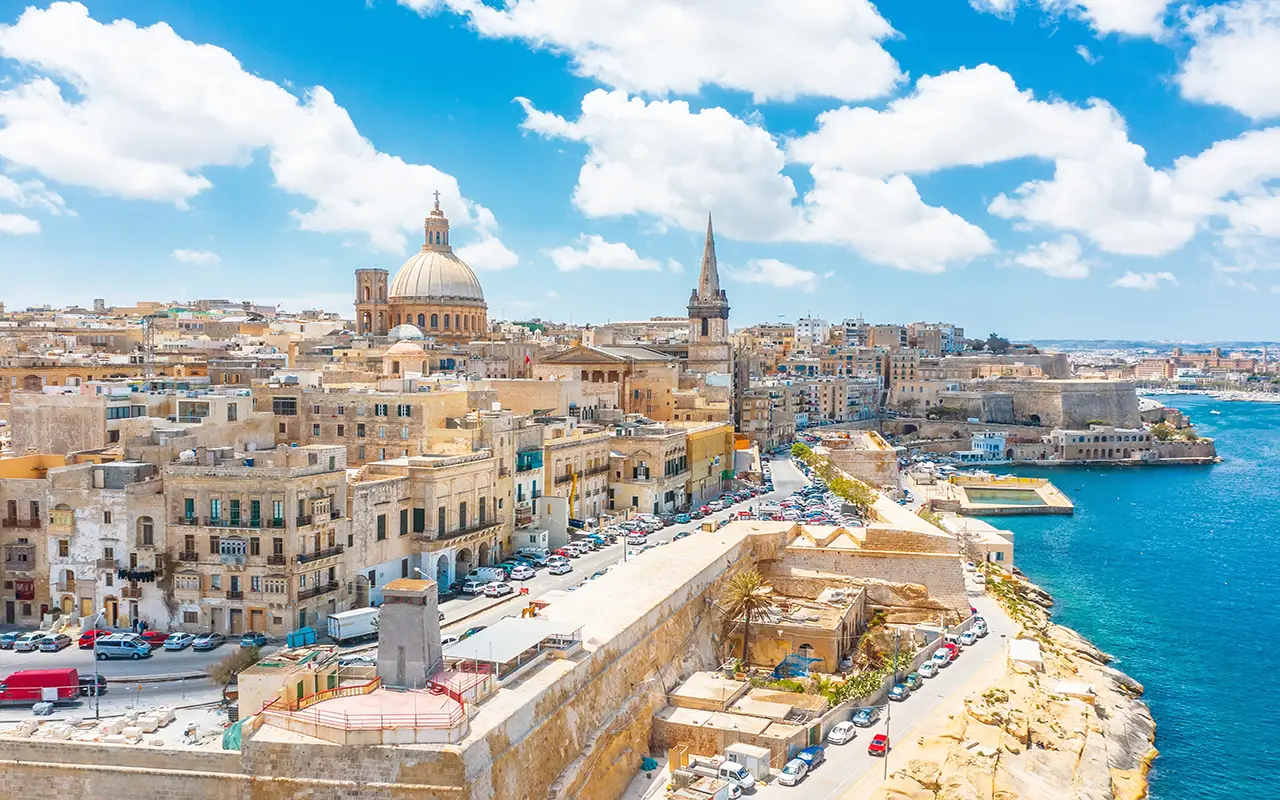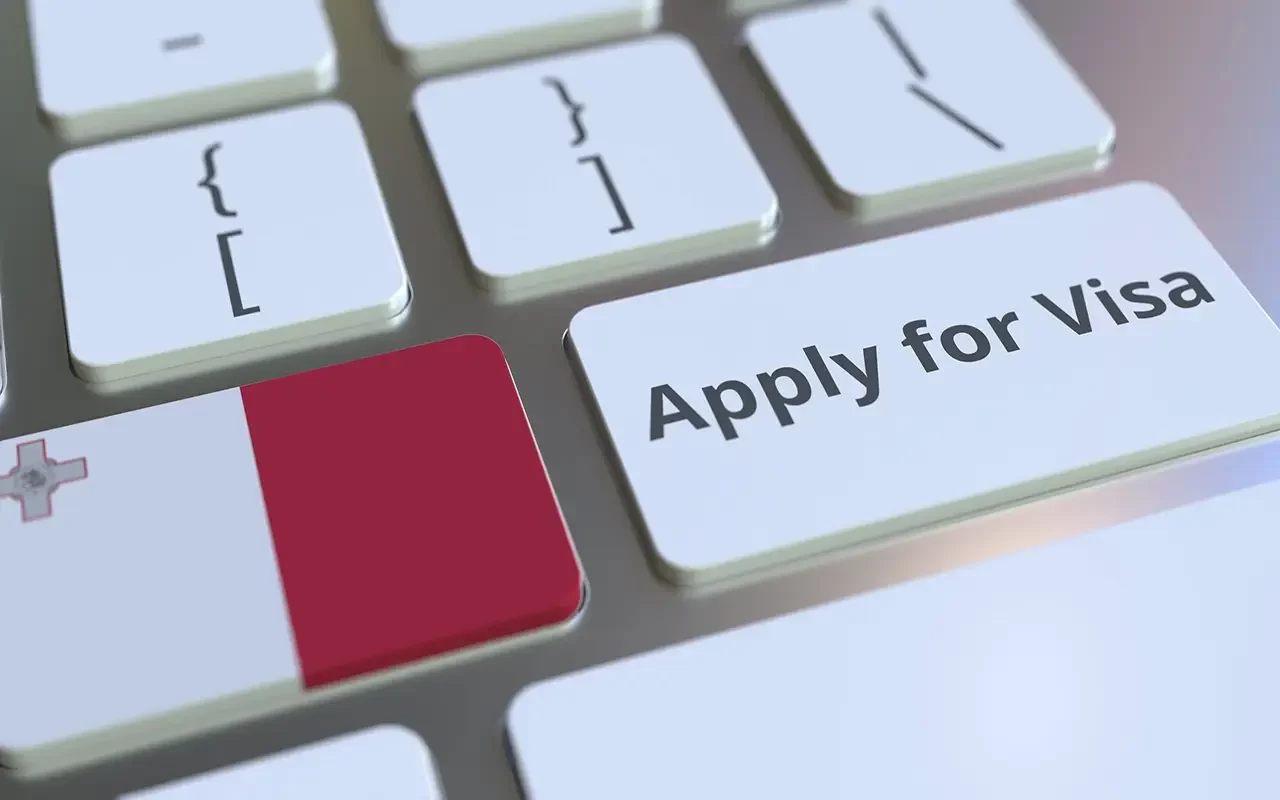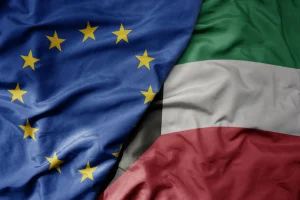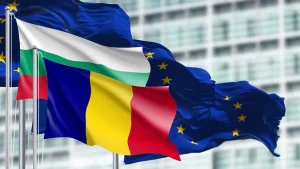
Table of Contents
Overview of Malta
Malta is an island country located in the southern Mediterranean, almost equidistant from Italy and Tunisia. Its population of over half a million people speak Maltese; an Arabic influenced language. Among the world’s top 10 smallest countries, Malta is also one of the most densely populated, but its tiny size belies a wealth of history. Malta’s proximity to both northern Africa and southern Europe shaped its unique historical and cultural development. Continuously occupied for millennia, Malta was ruled throughout its ancient, medieval, and pre-modern period by a diverse group of peoples, including Romans, Arabs, and Europeans, whose collective influence is reflected in the diversity of its architecture, cuisine, and linguistic-cultural traditions. A British colony from the 19th century onwards, Malta achieved true independence in 1979. Since then, it has emerged as a top tourist destination for its cultural heritage and beautiful beaches. Its capital, Valetta, is surrounded by a series of ancient and medieval fortifications. A UNESCO Heritage Site, its interior is densely packed with historic architecture. The City Gate, completed in 2014 by the famed Italian Architect Renzo Piano, is the gateway to Valetta’s baroque churches, art-filled palazzos, and historic military installations. Commissioned by the legendary Knights of Malta, the minimalist facade of St. John’s Co-Cathedral disguises one of the most significant Baroque churches in all of Europe, as well as Caravaggio grandest canvas: The Beheading of St. John. Visitors can also tour the Grandmaster’s Palace, the historical and contemporary seat of the ruler of Malta. The Upper Barrakka Gardens offer splendid views of the city and its Grand Harbour. Malta’s three UNESCO Heritage Sites include the Megalithic Temples-seven prehistoric structures that represent some of the earliest stone buildings in existence, and the Hypogeum-an ancient, underground complex of chambers and passageways carved out of rock. Outside Valetta, one can explore the smaller islands that comprise the archipelago of Malta. Make a pilgrimage to the stunning beaches of Gozo, site of the famed Azure Window, a (now-collapsed) natural arch, or swim and dive in the crystal-clear Blue Lagoon, off Comino. Maltese cuisine can be sampled throughout its islands. Heavily influenced by Italian culinary traditions, its national dish: stuffat tal-fenek-Rabbit Stew, is unique to the island. Malta is also famous for its nightlife, particularly its lively club scene. Despite its historical treasures, Malta today is perhaps best recognized as the filming location of the popular Game of Thrones television series, as well as the setting for several famous Hollywood films, including Gladiator. One of only two island Schengen countries, Malta signed the Schengen agreement in 2003, becoming part of the Schengen area in 2007.Malta Schengen Visa Eligibility
Schengen visa eligibility for Malta includes third-country nationals from the following states, who are excluded from visa-free to Malta/the Schengen area, and are therefore eligible to apply for a Schengen visa to Malta:|
1. AFGHANISTAN |
53. LAOS |
|
2. ALGERIA |
54. LEBANON |
|
3. ANGOLA |
55. LESOTHO |
|
4. ARMENIA |
56. LIBERIA |
|
5. AZERBAIJAN |
57. LIBYA |
|
6. BAHRAIN |
58. MADAGASCAR |
|
7. BANGLADESH |
59. MALAWI |
|
8. BELARUS |
60. MALDIVES |
|
9. BELIZE |
61. MALI |
|
10. BENIN |
62. MAURITANIA |
|
11. BHUTAN |
63. MONGOLIA |
|
12. BOLIVIA |
64. MOROCCO |
|
13. BOTSWANA |
65. MOZAMBIQUE |
|
14. BURKINA FASO |
66. NAMIBIA |
|
15. BURMA/MYANMAR |
67. NAURU |
|
16. BURUNDI |
68. NEPAL |
|
17. CAMBODIA |
69. NIGER |
|
18. CAMEROON |
70. NIGERIA |
|
19. CAPE VERDE |
71. NORTH KOREA |
|
20. CENTRAL AFRICAN REPUBLIC |
72. OMAN |
|
21. CHAD |
73. PAKISTAN |
|
22. CHINA |
74. PAPUA NEW GUINEA |
|
23. COMOROS |
75. PHILIPPINES |
|
24. CONGO |
76. QATAR |
|
25. COTE D’IVOIRE |
77. RUSSIA |
|
26. CUBA |
78. RWANDA |
|
27. DEMOCRATIC REPUBLIC OF CONGO |
79. SAO TOME AND PRINCIPE |
|
28. DJIBOUTI |
80. SAUDI ARABIA |
|
29. DOMINICAN REPUBLIC |
81. SENEGAL |
|
30. ECUADOR |
82. SIERRA LEONE |
|
31. EGYPT |
83. SOMALIA |
|
32. EQUATORIAL GUINEA |
84. SOUTH AFRICA |
|
33. ERITREA |
85. SOUTH SUDAN |
|
34. ETHIOPIA |
86. SRI LANKA |
|
35. FIJI |
87. SUDAN |
|
36. GABON |
88. SURINAME |
|
37. GAMBIA |
89. SWAZILAND |
|
38. GHANA |
90. SYRIA |
|
39. GUINEA |
91. TAJIKISTAN |
|
40. GUINEA-BISSAU |
92. TANZANIA |
|
41. GUYANA |
93. THAILAND |
|
42. HAITI |
94. TOGO |
|
43. INDIA |
95. TUNISIA |
|
44. INDONESIA |
96. TURKEY |
|
45. IRAN |
97. TURKMENISTAN |
|
46. IRAQ |
98. UGANDA |
|
47. JAMAICA |
99. UZBEKISTAN |
|
48. JORDAN |
100.VIETNAM |
|
49. KAZAKHSTAN |
101.YEMEN |
|
50. KENYA |
102.ZAMBIA |
|
51. KUWAIT |
103.ZIMBABWE |
|
52. KYRGYZSTAN |
Required Documents For Malta
All documents required for your Malta Schengen visa must be completed/translated in writing into Maltese or English. Applications for all Schengen visas to Malta will contain the following Basic Required Documents:- Valid passport
- Passport sized photos
- Application form
- Fingerprints (biometric data)
- Travel medical insurance
- Visa Fee
- Materials related to your trip:
- Reason for visit
- Where you will stay (accommodation)
- How you will fund your trip (finances)
- Proof that you will leave Malta before your visa becomes invalid/expires. This is often in the form of a paid roundtrip plane ticket (proof of return).
Malta Schengen Visa Fees
The standard Malta Schengen visa fee for an adult is 80 Euros. Certain types of applicants (most students, children under 6) are exempt from all visa fees. To get a Schengen visa for Malta, you will likely have to submit a service payment with your visa application-this is a separate cost from the visa fee. Please note that these fees are non-refundable in the case of visa rejection.
How to Apply for Malta visa: Steps
- Step 1: Determine your Purpose for travelling to Malta, which will determine the Type of visa you should apply for.
- Step 2: Determine how many Entries to Malta/the Schengen area you need.
- Step 3: Gather your Required Documents.
- Step 4: Schedule a Schengen Visa appointment (if applicable).
- Depending on the location of the consulate/visa center you are applying through, you may have to schedule an appointment in order to submit your application. Alternatively, you may be able to drop off your application without prior arrangement, so long as you do so during normal operating hours. Contact your consulate/visa center directly to find out if you need to schedule an appointment in order to submit your application.
- Step 5: Fill out your application.
- Different Consulates/visa processing centers may provide different ways of accessing applications. You can download, complete, and print out an online form, available here. Submit these paper copies to whichever consulate/visa center you are applying through.
- Step 6: Pay the application fee.
- Step 7: Submit your Malta Schengen visa application (at least 15 days prior to travelling, not before 6 months).
- Different consulates/processing centers have different procedures for submitting applications. In almost all cases, applications must be submitted in person to the consulate/center you are applying through.
- When you submit your application, you will likely also be asked to submit biometric data (fingerprints). Children younger than 12 years are likely exempt from having their fingerprints collected. However, facial photo capture is required for all applicants from 6 years and above. If you have previously submitted fingerprints (within the last 59 months), you likely will not need to resubmit them.
- Please note, after submitting your application, you may be asked to return at a later date for a personal interview to provide further information/materials related to your trip.
When to Apply
Submit your application at least 15 days prior to the day you intend to travel, and no earlier than 6 months before you leave.
Where to Apply
Applications for Schengen visas to Malta should be submitted at either a Maltese Consulate or a visa application center that has a relationship with Malta.
Ideally, you should lodge your application for a Malta Schengen visa in the country where you legally reside.
If you must apply through a consulate/center located in a country where you are currently legally present, but where you do not legally reside, you must have a valid and credible reason for doing so. Additionally, the consulate within the country must accept your reasons for applying through them and choose to process your application.
In countries where there is no Malta consular presence, applications may be lodged via the consulate of a Schengen state representing Malta consular interests.
Processing Time for Malta Schengen Visa
The Malta Schengen visa processing time is generally between 7-15 days, although it can take up to 60 days in certain cases.
If your Malta visa was approved:
Collect your visa and make sure the information it contains is valid and complete.
If your Malta visa was denied:
If you receive a Schengen visa rejection for Malta, you have the right to an appeal, within 15 days of receiving your rejection.
Begin this process by picking up your standard issued-visa refusal form, which describes why your request was denied, and explains the detailed steps of the appeal process.
You will likely have to pay an appeal fee, which is generally non-refundable regardless of the outcome of the appeal (positive or negative).
You should submit your Schengen visa appeal to Malta’s Immigration Appeals Board at the following address:
The Secretary
Immigration Appeals Board
109,
Triq Zekka
Valletta VLT 1517
You should also email a copy of your appeal to: [email protected]
Your appeal should contain a copy of the original refusal, certified by a notary.
You appeal should be written in English.
Finally, once you obtain your Schengen Visa for Malta, please note the following:
Your visa may be revoked if you do not notify the Malta Consulate/visa application center of any changes to your trip itinerary that occur after you have submitted your application.
Being approved for a Malta visa does not guarantee you entry to either Malta or the general Schengen area – you can still be refused entry to both places upon arrival.
Alternatively, you may have to show additional documents regarding your finances or accommodation in order to enter Malta/the Schengen area.


